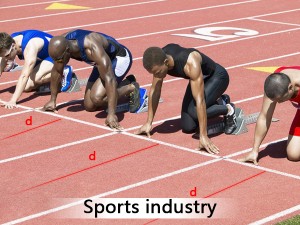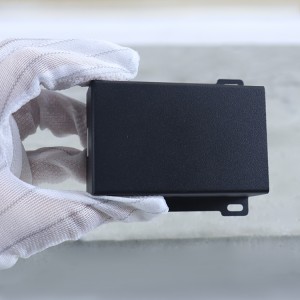Sports Industry Laser Measuring Sensors
Laser measuring sensors have become an increasingly important tool in the sports industry, providing precise and real-time data that can be used to enhance performance, ensure safety, and improve the overall experience for both athletes and spectators. Here are some key applications and benefits of laser measuring sensor in the sports industry:
Applications
1. Performance Analysis:
Speed and Distance Measurement: Laser distance sensors can accurately measure the speed and distance covered by athletes during training and competitions. This data is crucial for coaches and athletes to analyze performance and make informed decisions.
Jump Height and Reach: In sports like basketball, volleyball, and high jump, short range laser distance sensor can measure the height of jumps and the reach of athletes, providing valuable feedback for improving technique and performance.
2. Training and Coaching:
Biomechanical Analysis: Laser rangefinder sensors can be used to track the movement of athletes, helping coaches to analyze form and technique. This can be particularly useful in sports like golf, where small adjustments can lead to significant improvements.
Rehabilitation and Injury Prevention: By monitoring the movements and mechanics of athletes, laser ranging sensors can help identify potential areas of strain or injury, allowing for proactive measures to be taken.
3. Event Management:
Boundary and Line Detection: In sports like tennis, football, and cricket, oem laser distance sensor can be used to detect when a ball crosses a boundary or line, reducing the need for human judgment and minimizing errors.
Track and Field Events: For events like the long jump, triple jump, and pole vault, high accuracy laser distance sensor can provide accurate measurements of distances and heights, ensuring fair and consistent results.
4. Spectator Experience:
Real-Time Data Display: Smart laser distance sensor can provide real-time data that can be displayed on screens for spectators, enhancing their understanding and enjoyment of the event.
Interactive Experiences: Some venues use laser technology to create interactive experiences for fans, such as virtual games or augmented reality displays.
5. Safety and Security:
Crowd Control: Digital laser distance sensor can be used to monitor crowd density and flow, helping to ensure the safety and security of spectators at large events.
Obstacle Detection: In outdoor sports, long range laser sensor can detect obstacles or hazards, alerting officials and athletes to potential dangers.
Benefits
1. Precision and Accuracy: Short laser distance sensor offers high levels of precision and accuracy, which is essential for making reliable and meaningful measurements in sports.
2. Real-Time Feedback: The ability to provide real-time data allows for immediate adjustments and improvements, whether it’s during a training session or a live event.
3. Consistency: Oem laser distance sensor reduces the variability and subjectivity that can come with human measurement, ensuring that results are consistent and fair.
4. Versatility: These industrial laser distance sensors can be adapted for a wide range of sports and applications, making them a versatile tool for the industry.
5. Cost-Effective: While the initial investment in laser measuring technology can be significant, the long-term benefits in terms of improved performance, reduced errors, and enhanced spectator experience often justify the cost.
Conclusion
Laser measuring sensors are transforming the sports industry by providing precise, real-time data that enhances performance, ensures fairness, and improves the overall experience for athletes and spectators. As technology continues to advance, we can expect to see even more innovative applications of industrial laser distance sensors in the world of sports.

